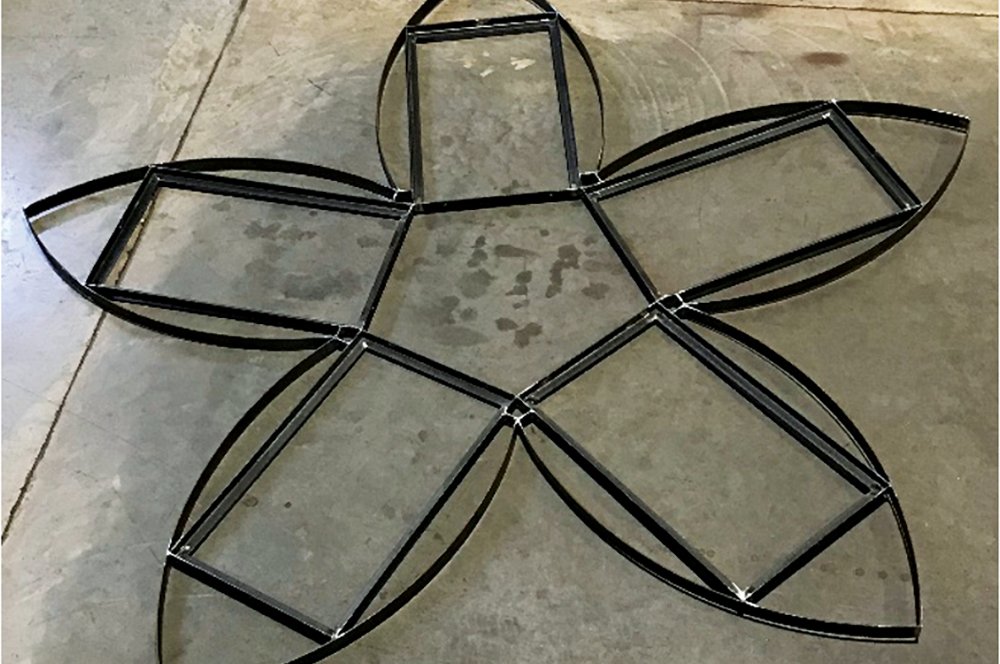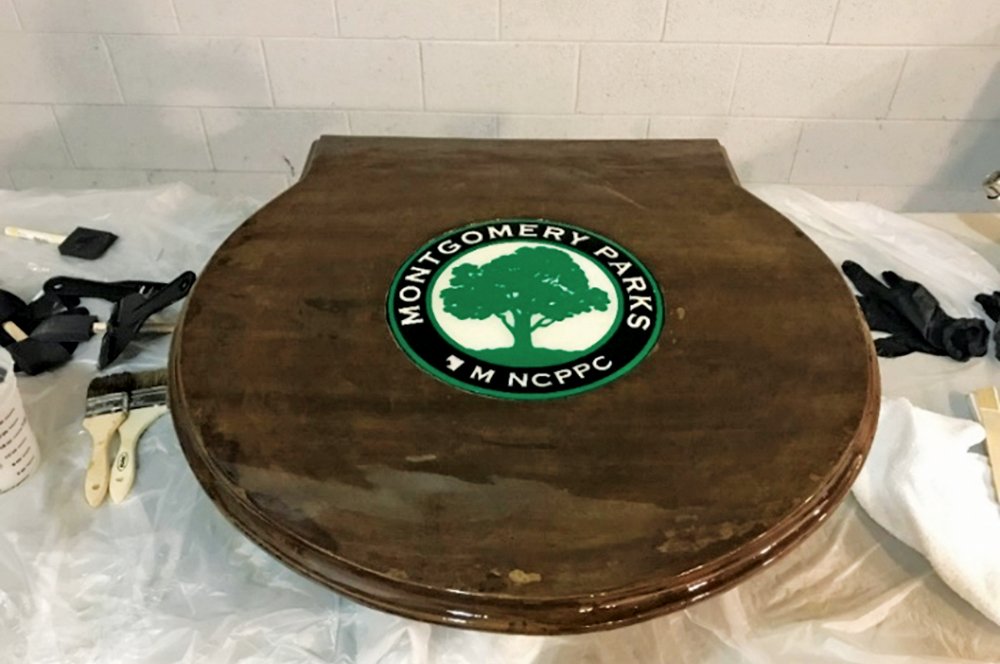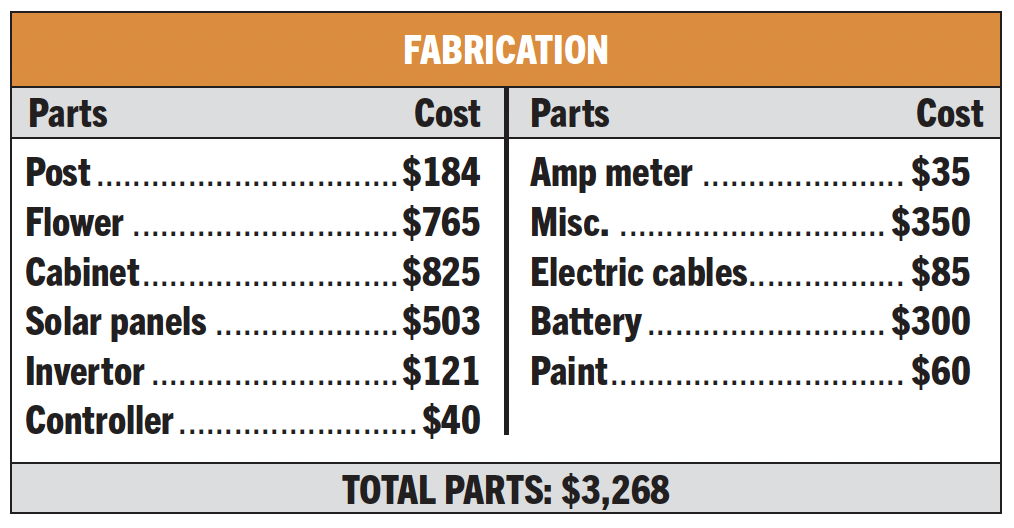Provide a lifeline for patrons to access electronic devices in remote areas
By Parviz Izadjoo
Photos: Parviz Izadjoo
Solar-powered charging stations are becoming more visible in public areas—especially where there is no access to power lines. The stations are frequently used to charge mobile devices such as laptops and phones. Mobile phones, also known as “smartphones,” are among the most sophisticated electronic devices ever built and are gradually evolving into mobile personal computers.

However, a major shortcoming with mobile devices is the battery’s storage capacity. No matter how powerful and versatile a device, once the battery is drained of power, it is rendered useless. Therefore, having access to charging stations, whether indoors or outdoors, is critical. Unfortunately, installing charging stations where power lines are not accessible poses a serious challenge with limited and costly solutions.
Many companies offer solar-powered charging stations that vary in size and design based on users’ needs. Therefore, anyone planning to purchase a solar-powered charging station should consider:
- Number of users at any given time
- Types of devices to be charged
- Location
- Potential for vandalism
- Aesthetics
- Need for a seating area
- Adequate sun exposure
- Accessibility
- Size of battery
- Safety.

The Facilities Management Division of The Maryland-National Capital Park & Planning Commission explored different approaches to providing charging stations for park patrons. In a review of many of the available options in the market, it was determined that none of them would work for the division’s needs. Particularly, since the charging station was for a park setting (in addition to its appropriate technical specifications), it had to be in harmony with the natural setting. Therefore, the goal was to design and build a solar-powered charging station which not only can technologically fulfill the needs of park patrons, but also look aesthetically pleasing and iconic.
The solar flower was entirely designed and fabricated by in-house staff at the Facilities Management Division of the Montgomery County Department of Parks. This artistic sculptural design has adequate power for Wi-Fi and electrical outlets to charge laptops, mobiles phones, and other electronic devices. The solar flower provides 150 watts of power, harvested from the sun and stored in batteries. This device can be installed in parks and any remote areas with no access to power lines.
Planning
The most important consideration during planning was an accurate assessment of how many units could be charged at a given time, whether or not a seating area would be provided, and whether the charging station would be adjacent to a shelter. Other considerations, such as location, visibility, public accessibility, and maintenance access, were also important.
Design
To achieve similar success, an appropriate team of knowledgeable individuals should be assembled as the design team. An engineer or an architect would be an appropriate team leader. A structural engineer and an electrician with experience in solar panels and a welder (fabricator) also are needed.
Design considerations should include but are not limited to:
- Deciding on the appearance of the charging station. As such, a large structure in the parks must be aesthetically pleasing. What is the intended look and image of the charging panels (i.e., an abstract form, industrial look, or a natural impression as the desired image)? Shape, size, color, and resemblance of the solar charging station will be the first thing the public will see from a distance. In our case, we wanted the station to look like a black-eyed Susan, the official flower of the state of Maryland, although we only gave the station five petals.
- Deciding the pole’s height, which may vary for different reasons: to prevent vandalism, avoid shade, and provide visibility from a farther distance.
- Determining the optimum vertical angle for absorbing the most solar energy in a particular region.
- Determining the size and type of solar panels. Decide whether monocrystalline, polycrystalline, or thin-film solar panels are most appropriate for your case and the wattage supplied by the panel.
- Determining the type and number of charging outlets. Do you prefer providing only USB cabled outlets, electro-magnetic-charging surfaces, or a combination of both?
- Determining the size of the battery needed to store the gained solar energy. An electrician can calculate the load based on the number of outlets used at the time and duration for absence of sunlight.
- Providing a watertight cabinet (preferably an electrical cabinet) with a lockable door for the battery.
- Accounting for drainage provisions to prevent water from infiltrating the electrical cabinet.
- Determining how the charging outlets will be protected from rainfall.
- Ensuring both the site and the charging outlets are ADA-accessible.
- Designing an appropriate footing for the pole (to be done by a licensed structural engineer).
Fabrication

Fabrication will mostly be coordinated between the designer and the welder. The method used for our project was to print the drawing for every piece of the assembly separately in its actual size. Each drawing was then cut and used as a pattern to fabricate the actual metal piece. Even though aluminum would have been a superior choice due to its light weight and because it is more resistant to corrosion, we used steel because it was easier to handle and fabricate. The fabricated steel pieces were then primed and painted.
Next, we purchased an electrical cabinmate with a specific height, width, and depth, and made sure it would fit the batteries while still providing a proper height for ADA-accessibility. For the surface top, concrete was poured into a form made from plywood, and the parks logo was placed as an inset in the concrete.
Cost
The table below shows the cost of items purchased to fabricate the solar charging station. The cost of labor and installation is not included.

Parviz Izadjoo, Ph.D., RLA, is a Project Manager for the Maryland National Park & Planning Commission in Gaithersburg, Md. Reach him at (301) 670-8037, or parviz.izadjoo@montgomeryparks.org.
